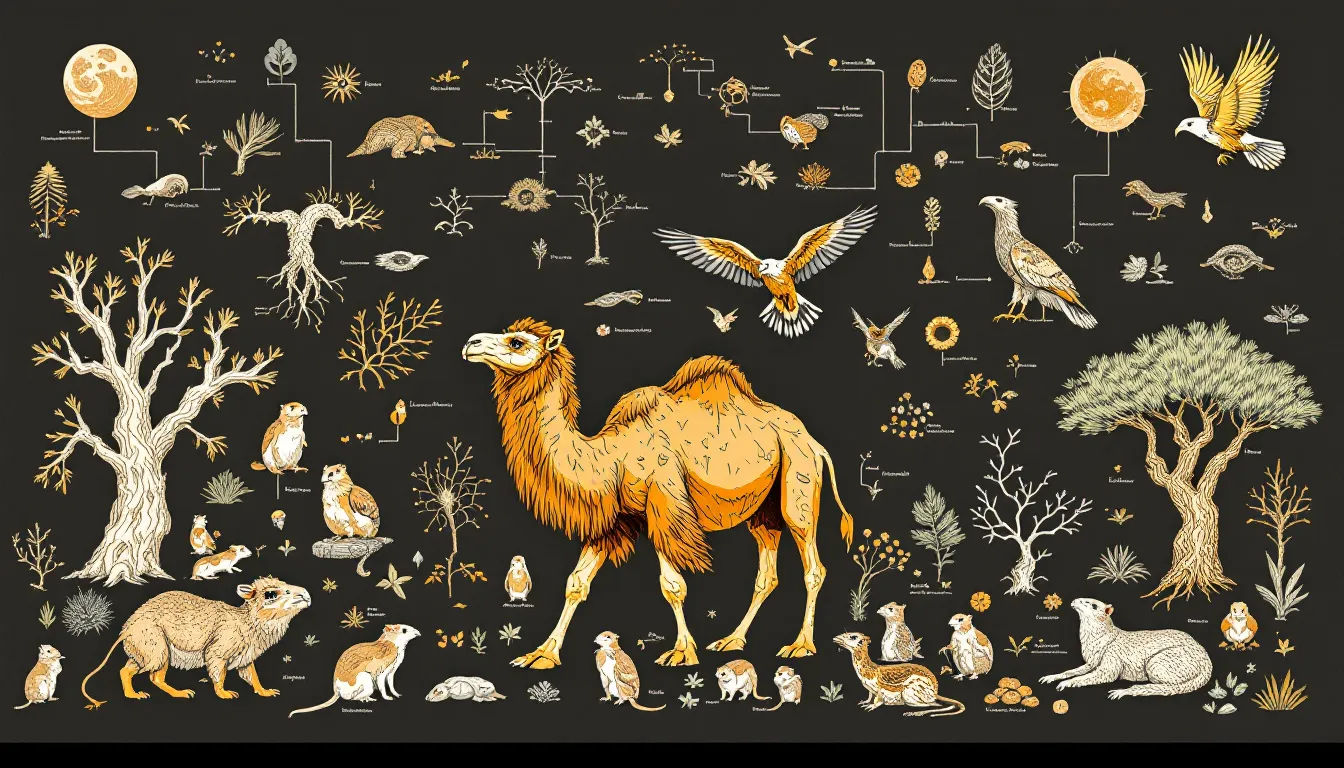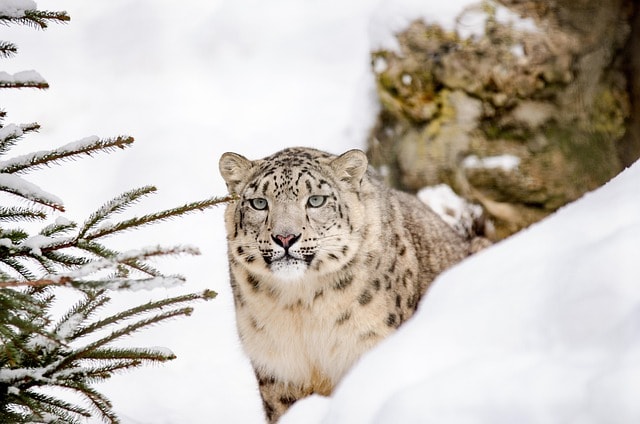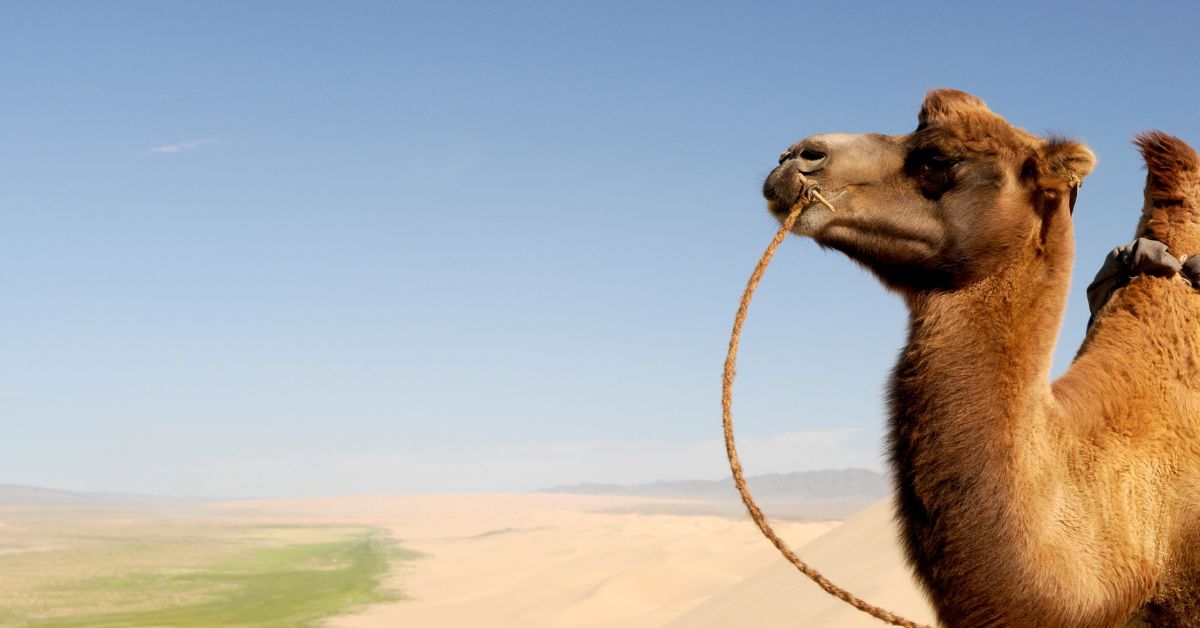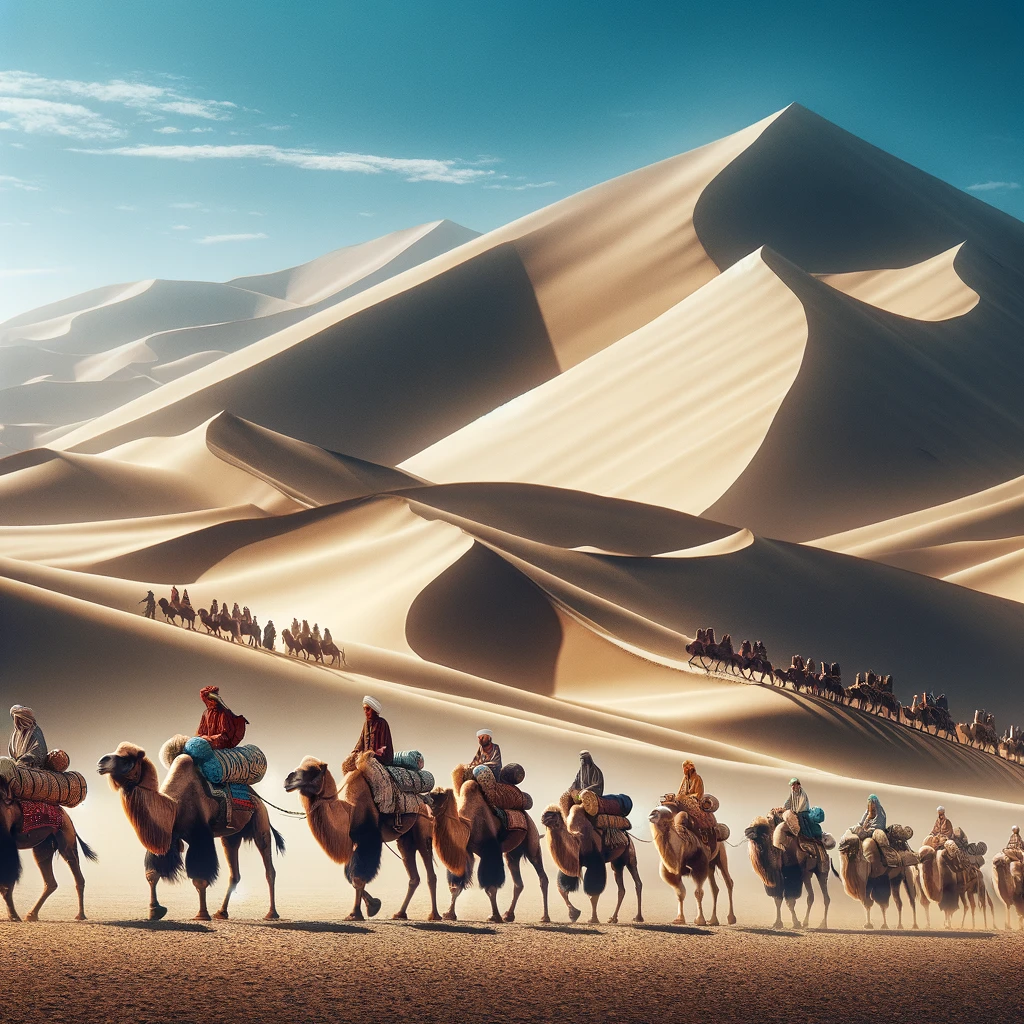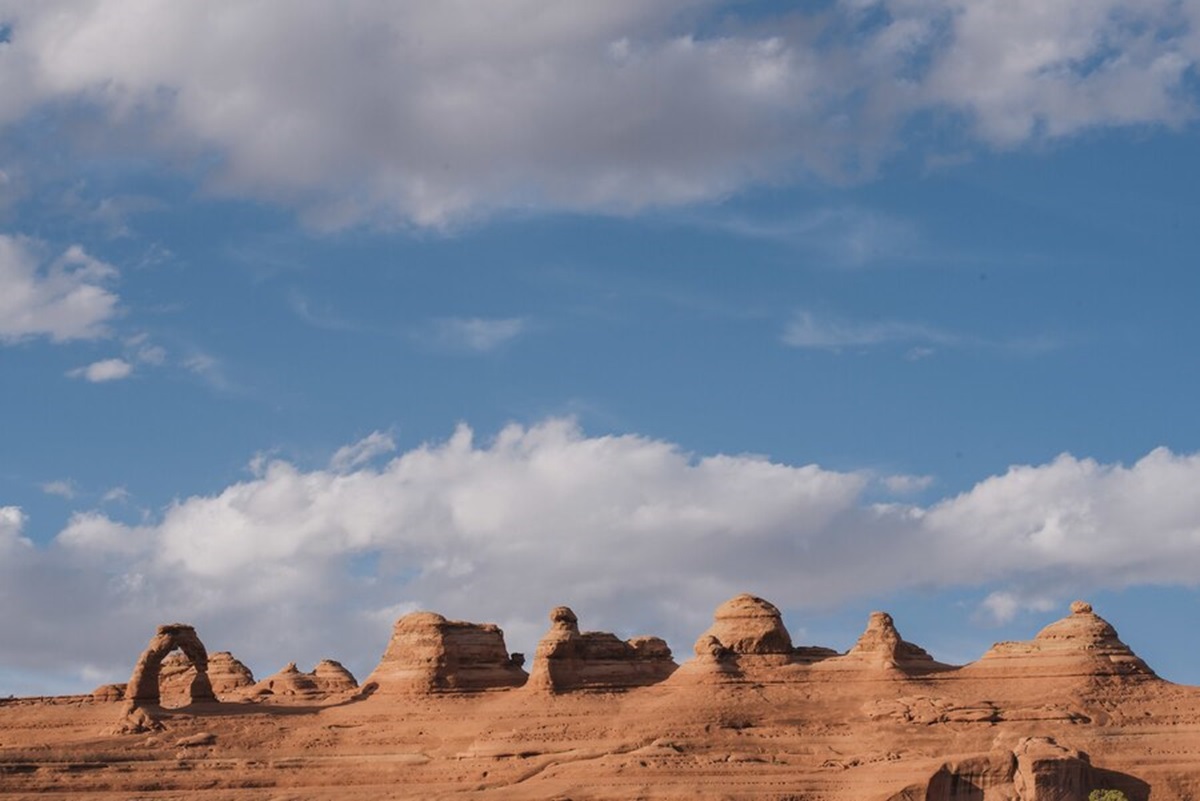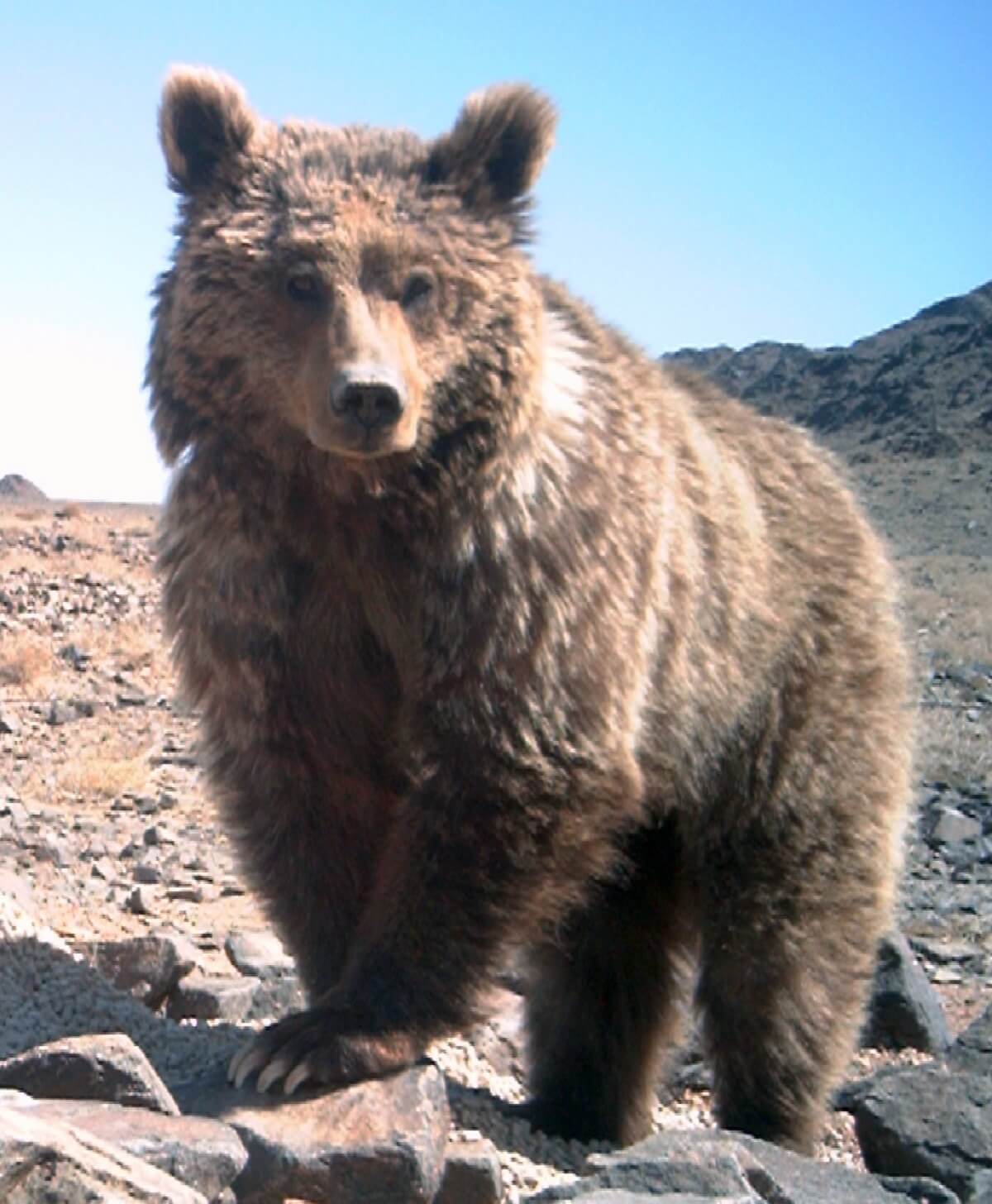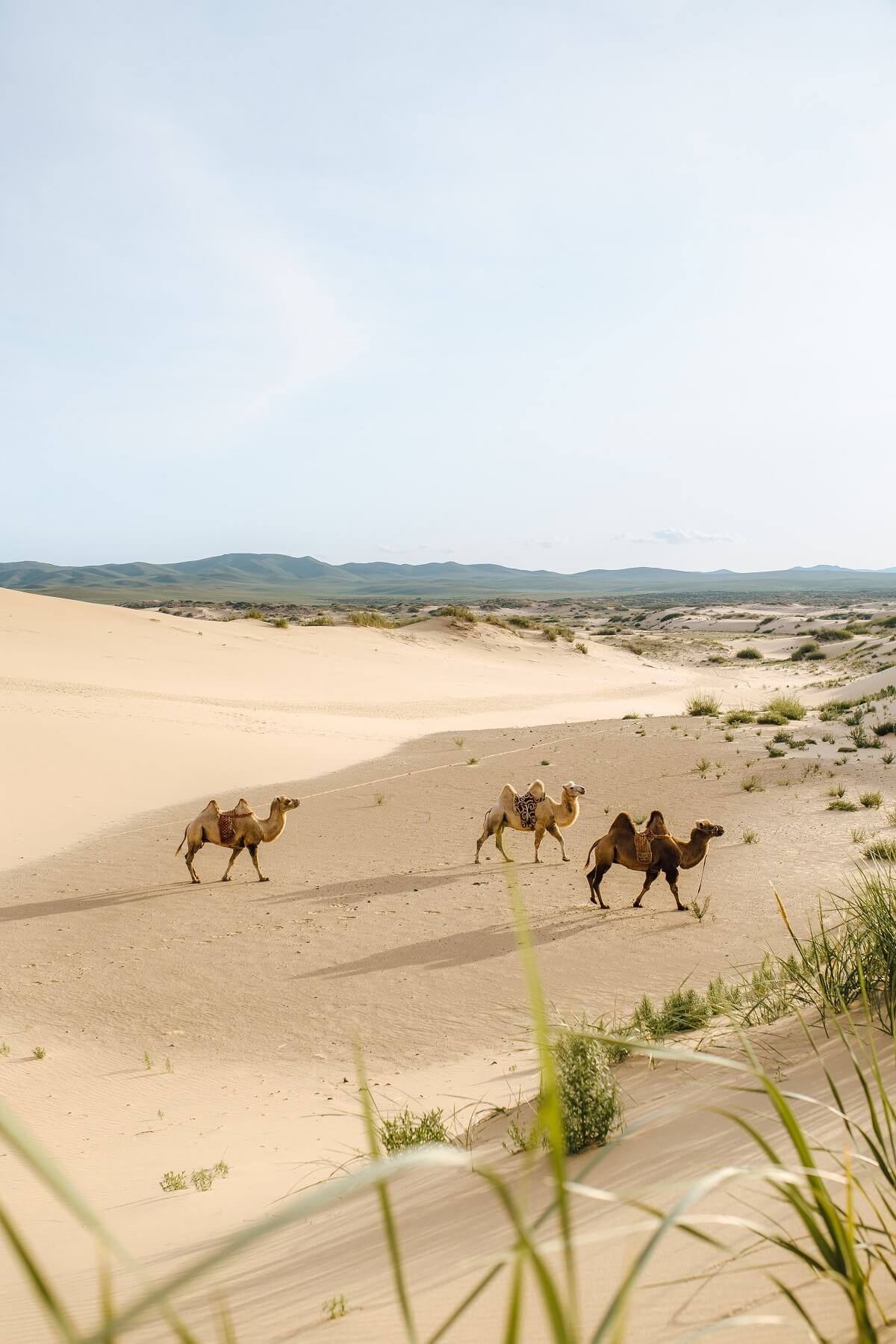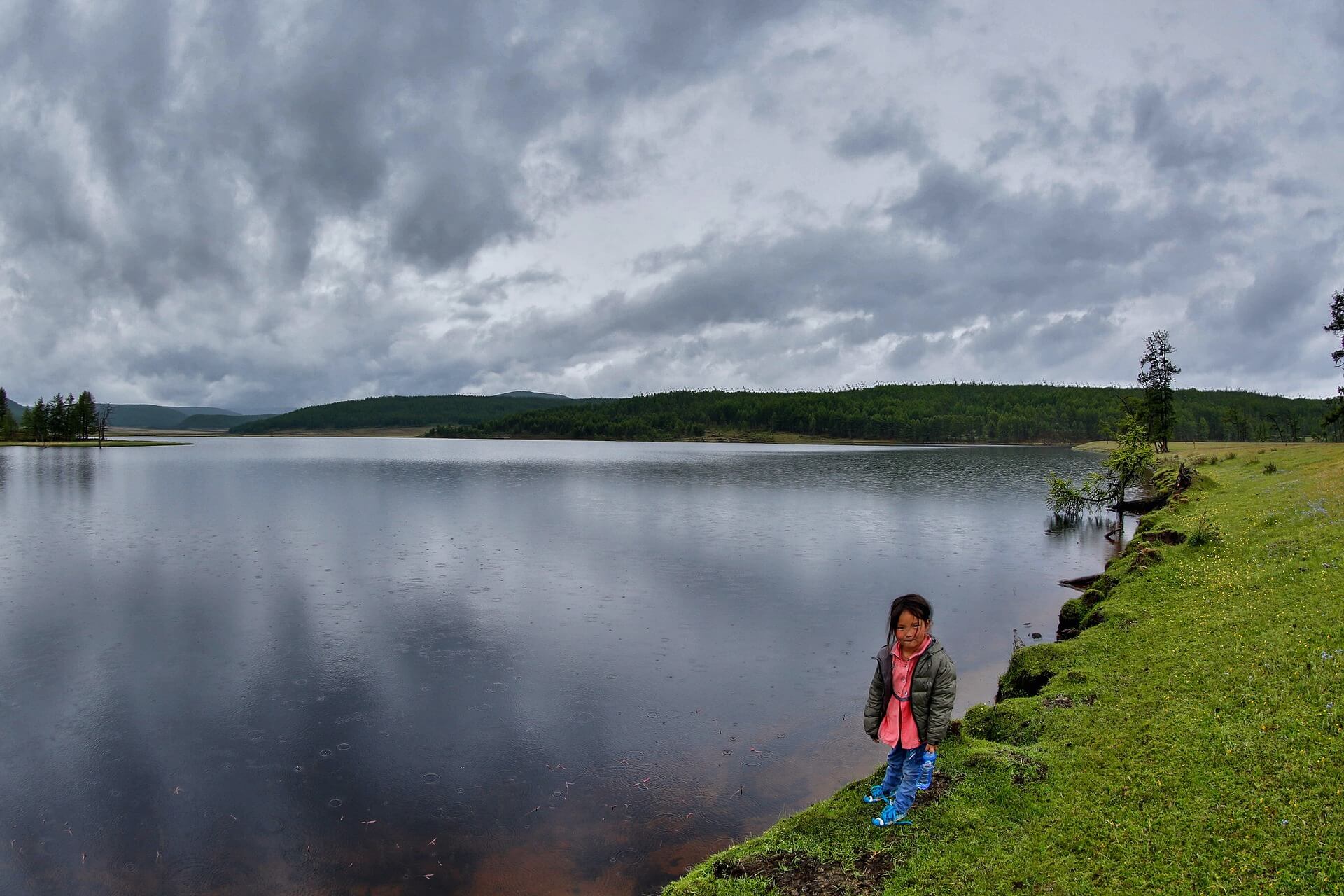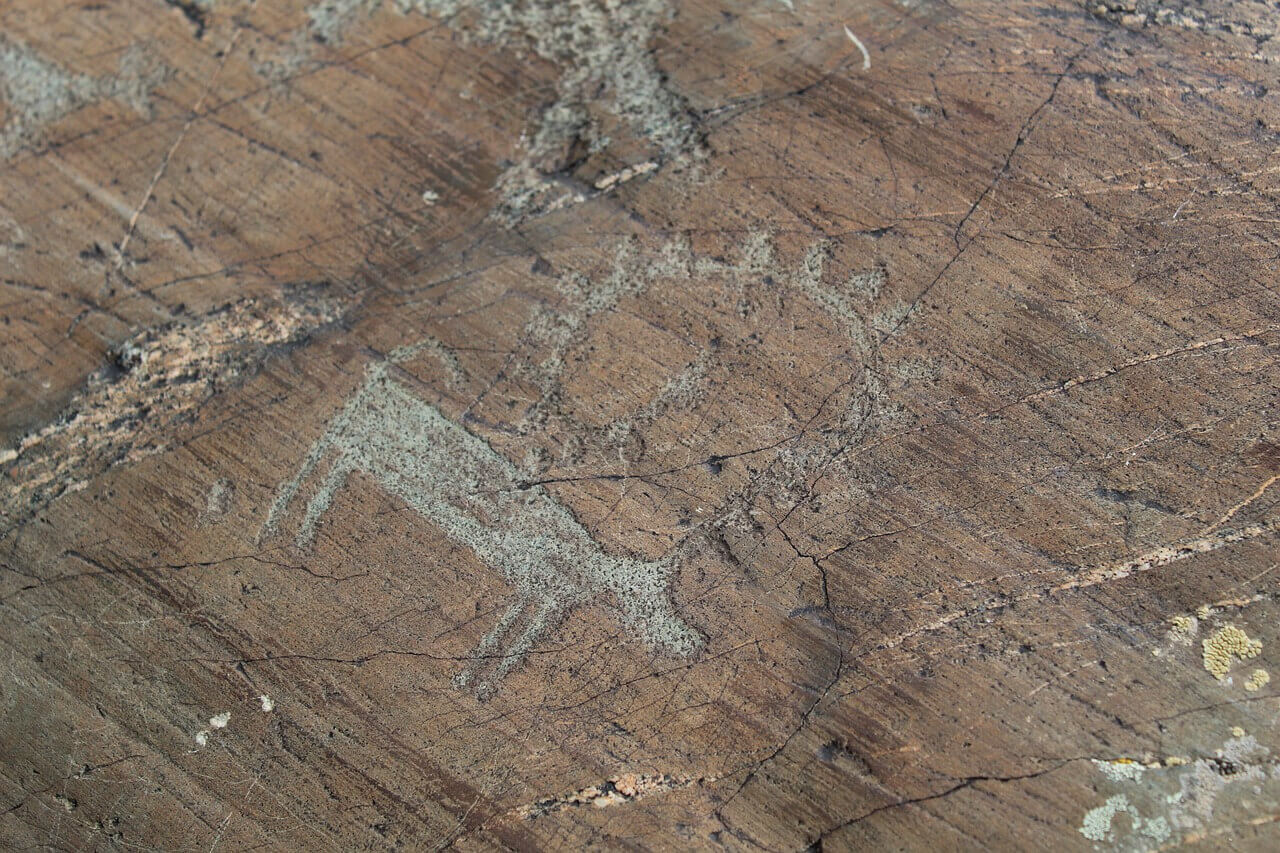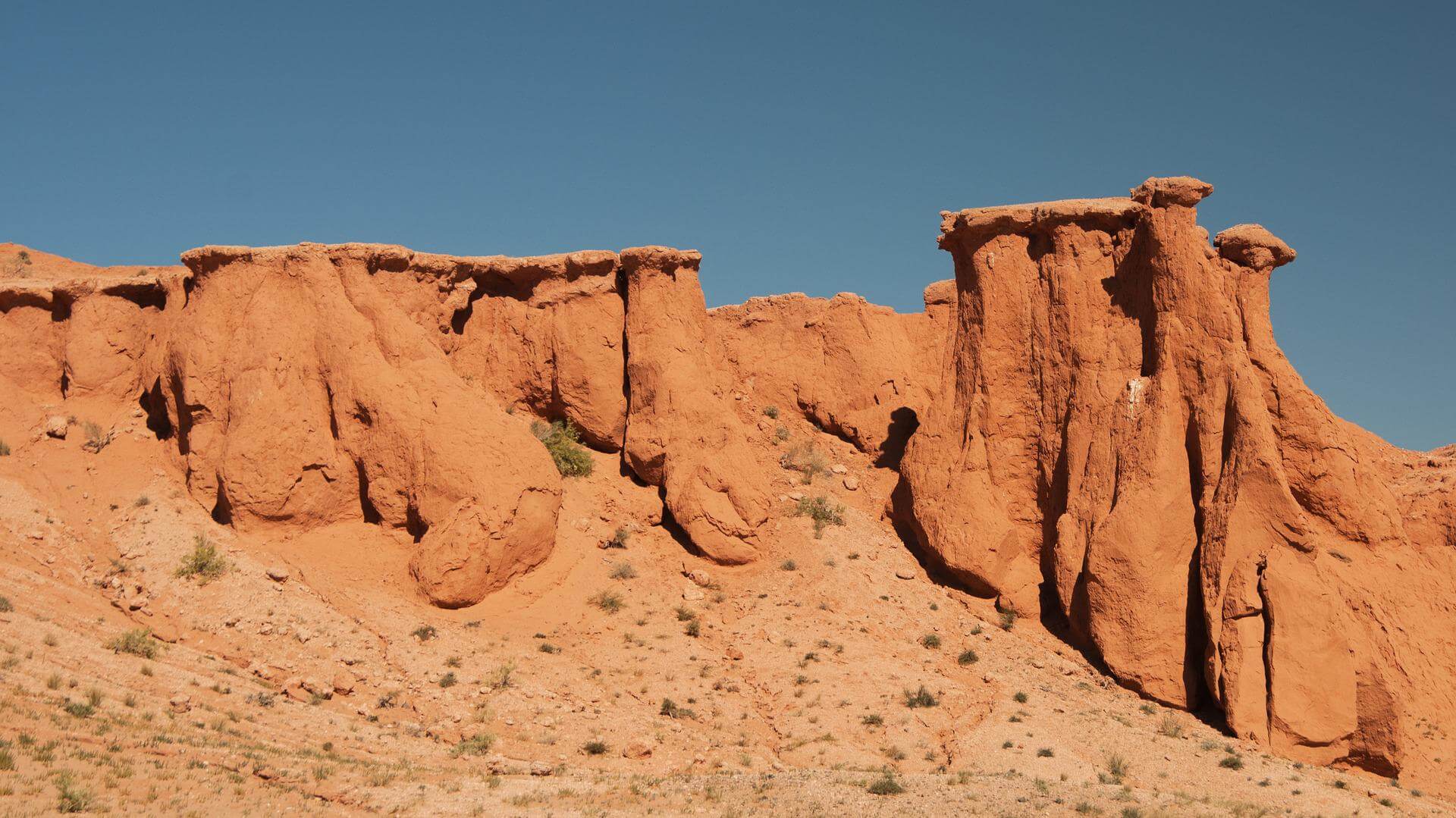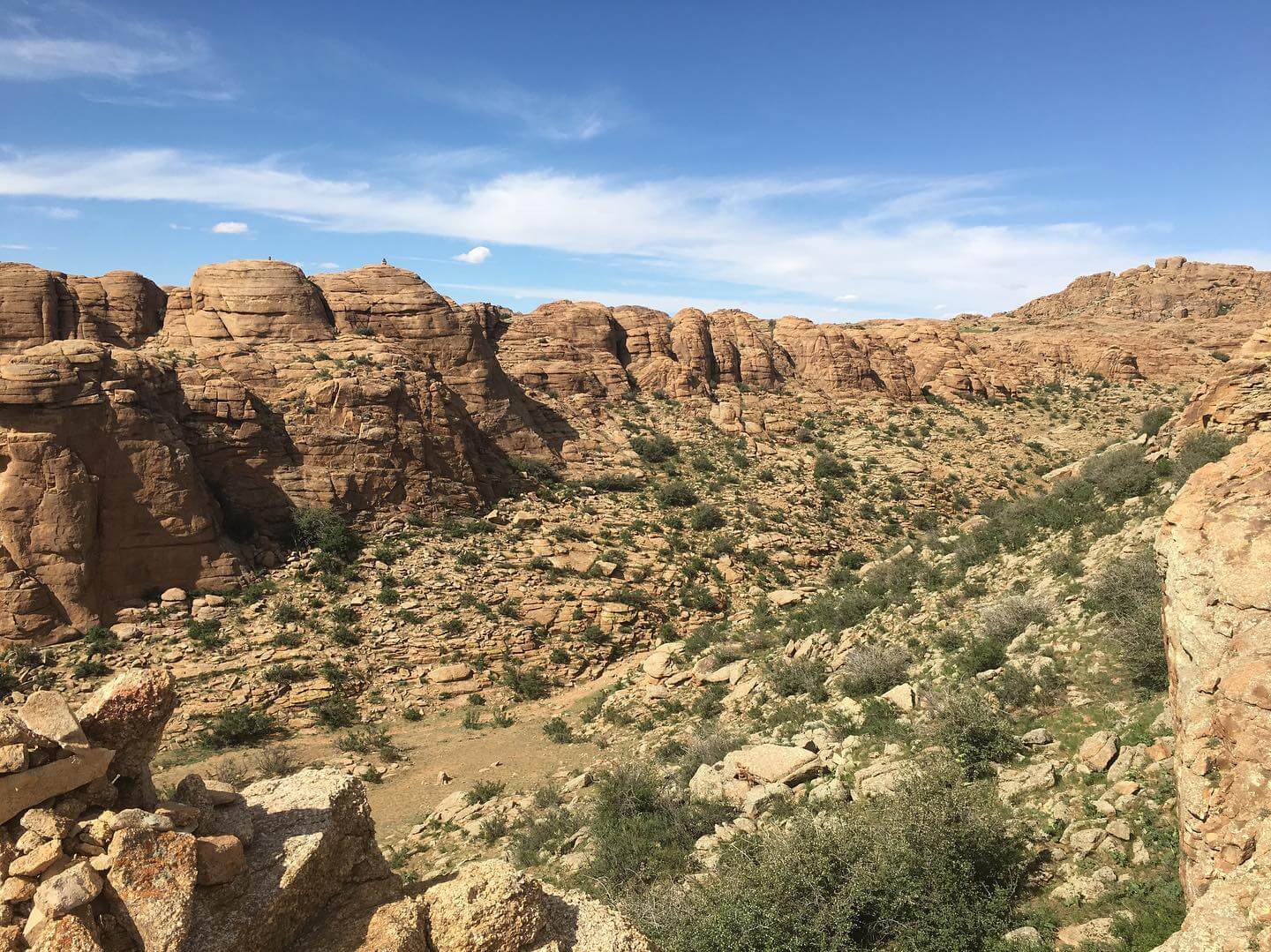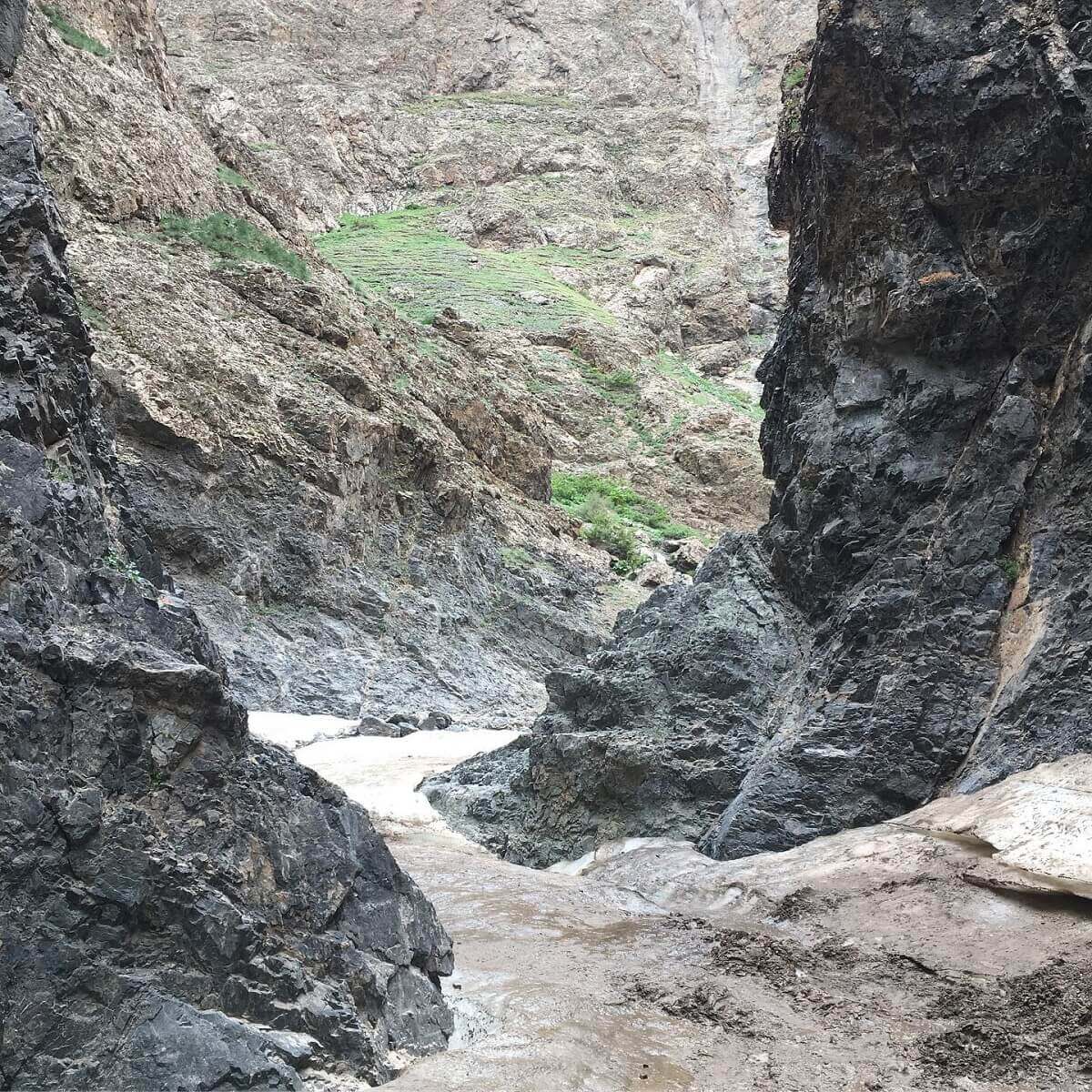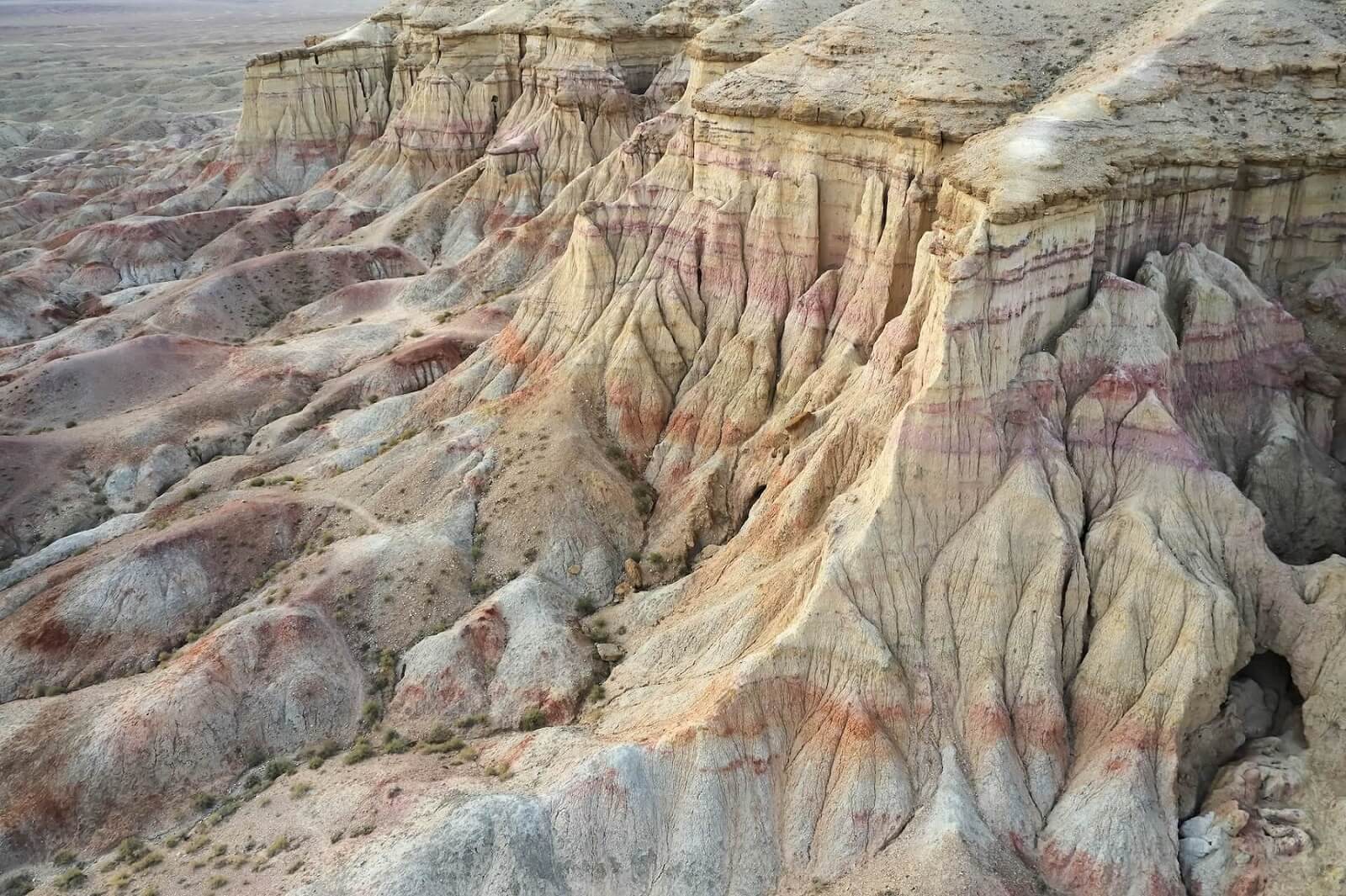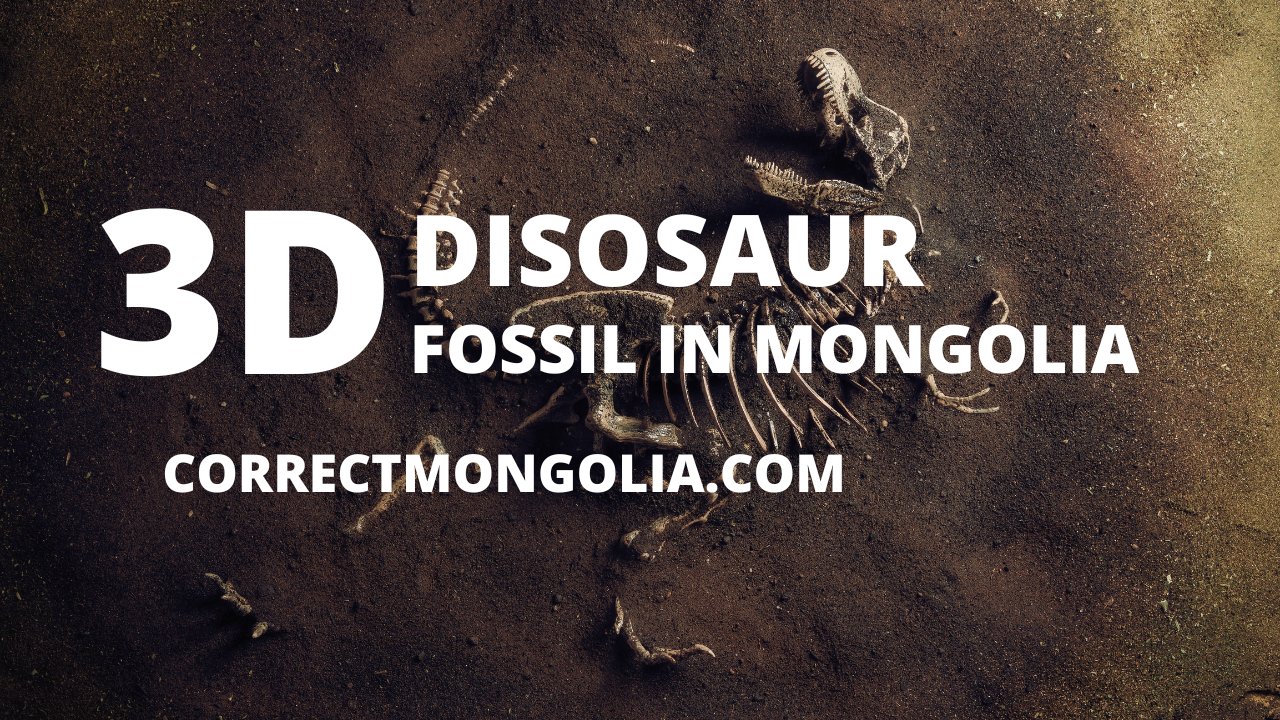Gobi Desert Mongolia: A Traveler’s Guide
The Gobi Desert Mongolia is the largest desert in Asia and the fifth largest in the world. Sand dunes, rare animals and nomadic culture, it’s a window into an ancient world where tough is normal.
This guide goes into the extremes of the Gobi, from scorching heat to freezing cold, and the unique species that call it home and the human cultures that roam its vastness. Join us to explore the Gobi, a land that is as much a part of Mongolia’s past as it is a window into the Earth’s prehistoric history.
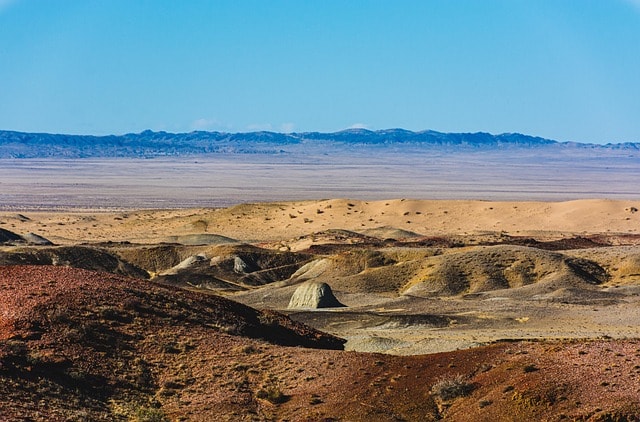
Key Points
The Gobi Desert Mongolia is big and ecologically diverse, 1.3 million square kilometers across Asia, and supports a unique array of plant and animal life despite the extreme climate. The Altai Mountains, located to the north, influence the Gobi Desert’s climate and create distinct ecological zones by affecting rainfall patterns.
The Gobi is historically and culturally important with its nomadic people, ancient trade routes including parts of the Silk Road, and as a site of remarkable paleontological discoveries, the first dinosaur eggs.
Environmental challenges like desertification and resource extraction are threatening the Gobi’s ecosystem, conservation is critical to protect its biodiversity and the traditional nomadic lifestyle.
The Gobi in a Nutshell: A Mongolian Desert Overview
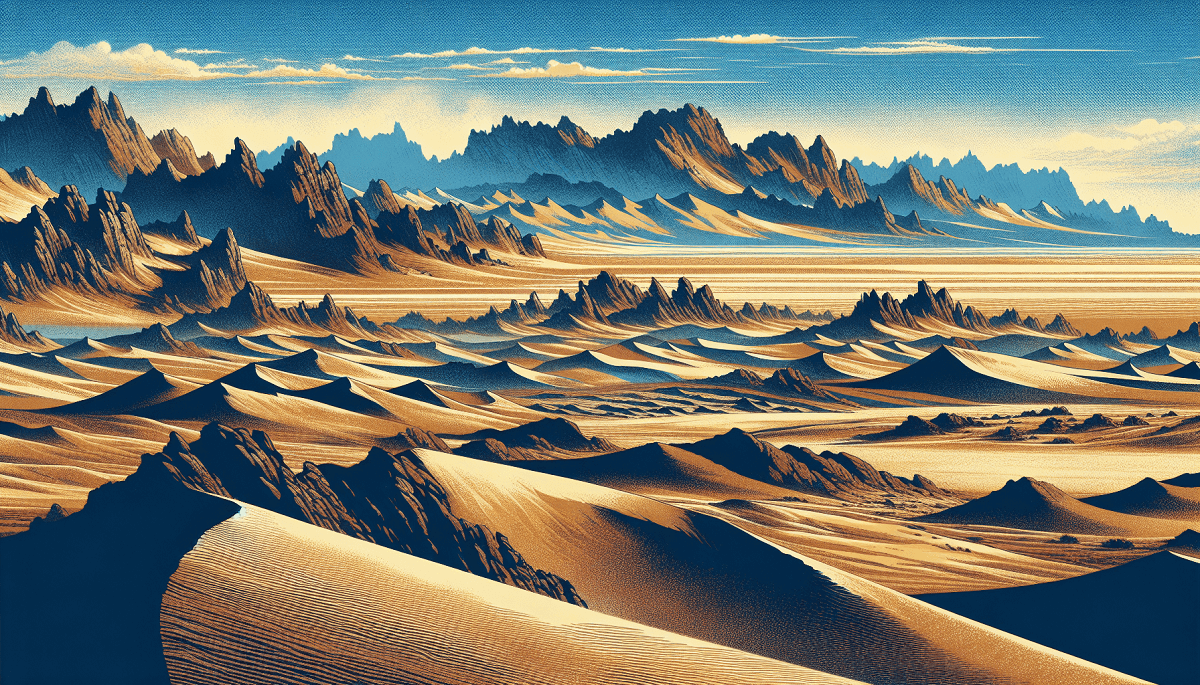
1.3 million square kilometers big, the Gobi Desert Mongolia is more than just a desert of sand; it’s a big and diverse ecosystem that covers 40% of Mongolia. Far from being a barren wasteland, the word ‘Gobi’ is a Mongolian word that means a central Asian semi-desert full of vegetation and life. This cold desert, compared to sandy deserts like the Sahara, is unique and the people who live here are tough.
The Gobi Desert Mongolia is composed of five distinct eco-regions, including the Ala Shan Desert located in the southern part, which illustrates the diverse ecological characteristics of the region.
The Mongolian Gobi Desert, including the Gobi Altai region, is not only a natural wonder but a cultural treasure, with nomadic herders roaming across its vastness, living in harmony with the arid landscape. The desert is home to unique species like the Gobi bear and the Bactrian camel, who add to the mystique of this big desert.
The Centre of Asia’s Biggest Desert
Bordering the southern Gobi Desert and extending into northern China, the Southern Gobi Desert is a big geographical feature, bigger than Germany and France combined.
The Gobi Altai mountains influence local climate patterns and rainfall, contributing to areas receiving significant precipitation compared to the drier desert regions. It’s the heart of Asia’s biggest desert, with the Altai and Hangayan Mountains to the north, guarding it like sentinels of the vast arid land below.
This region is called Southern Mongolia and is a beauty and power of nature. The Gobi is big and covers five eco-regions, each with its own unique landscapes from the sand dunes of Khongor to the rocky terrain of Gaxun Gobi. This big desert is not only a place of solitude and silence but also a region of dynamic environmental importance, plays a crucial role in the ecology of East and Central Asia.

Sand, Stones and More: The Gobi Altai Mountains’ Terrain
Contrary to popular belief, only a small part of the Gobi Desert Mongolia is sand. Most of it is rocky and gravelly and can be driven across. This diverse terrain includes the Khongor Sand Dunes, some of the biggest in the world, with crests rising up to 80 meters high, stretching as far as 180 kilometers across the horizon.
The Gobi’s terrain is not limited to its famous dunes; it also has flat plains, low mountains and feather grass steppes, all making up a landscape that is as varied as it’s big. This arid landscape is a proof of the Earth’s diversity, showing how life can adapt and thrive in the most unexpected places.
Climate Extremes of the Gobi

The Gobi Desert Mongolia is an extreme place where the climate shows a big contrast between the scorching heat of summer and the freezing cold of winter. Temperatures drop to an average of -40 °F (-40 °C) in winter and soar to 113 °F (45 °C) in summer, the Gobi is a testament to the toughness required to survive in such conditions.
Northern and northwesterly winds dominate the Gobi, especially during the cold seasons, and shape the desert’s climate. Rain is scarce but plays a big role in this arid environment, from 2 inches in the west to 8 inches in the northeast. The desert’s precipitation patterns are crucial for the survival of the flora and fauna that live in the Gobi.
Scorching Summers to Freezing Winters
In the Gobi, the mercury’s ups and downs are a daily show, with temperatures showing one of the biggest annual ranges on Earth. The Gobi is a place where the unprepared has no refuge: winter’s cold can drop to -40 degrees Fahrenheit (-40°C) and summer’s peak can reach 113 degrees Fahrenheit (45°C).
The daily temperature fluctuations are no less extreme, a harsh lesson in the uncertainty of desert life. As the sun sets, the heat of the day disappears and the cold of the night takes over, a cycle as relentless as it is merciless. This is a land where survival depends on your ability to adapt to temperature extremes that can go from below sea level chill to near boiling heat in a single day.
Precipitation Patterns: When Rain Falls in the Gobi
Rain in the Gobi is an event of rare occurrence and uneven distribution, some areas get less than 2 inches a year, others get over 8 inches, mostly during the summer. The eastern Gobi, influenced by monsoon-like conditions, has a glimpse of green in the desert, with herb wormwood, salt marshes and grassy swamps sustained by small lakes and springs.
Despite the limited rainfall, only 40 mm a year, these precious drops are the lifeblood of the sparse ecosystems across the Gobi. Here, in the shade of rain, life persists, carving out a niche in the dry valleys and feather grass steppes, a testament to the living world.
The Living Gobi: Flora and Fauna
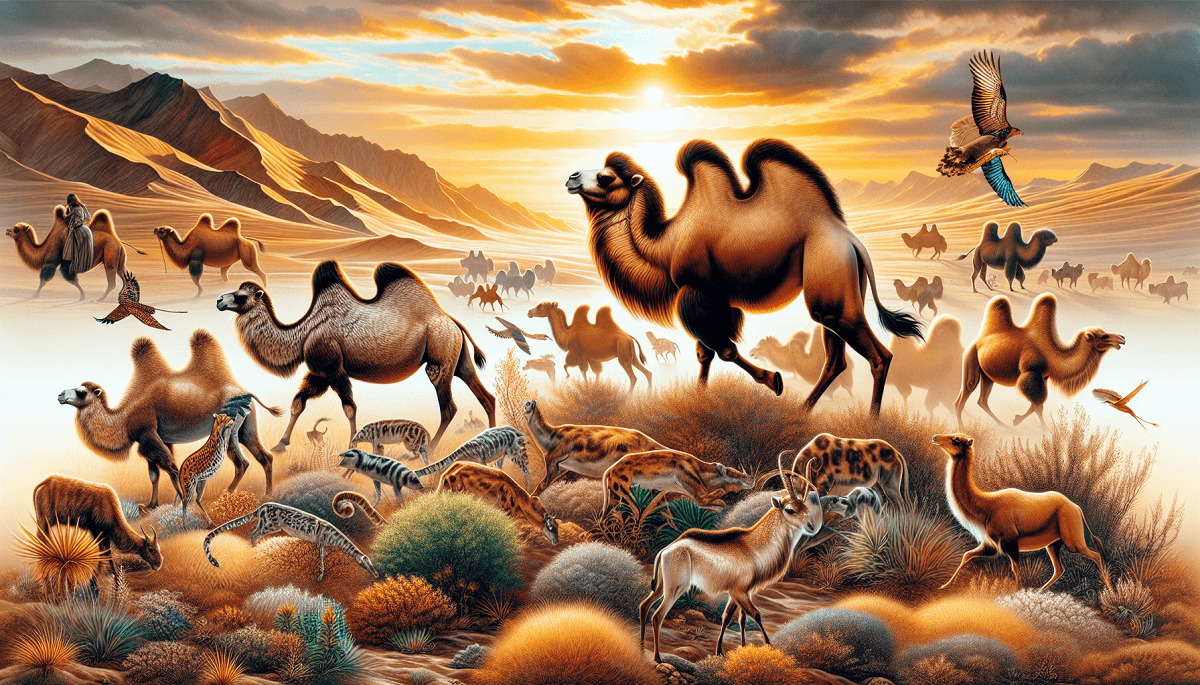
The Gobi may be known for its arid landscape but it’s also home to an unexpected array of flora and fauna that have adapted to live in this harsh environment. The desert’s animal life includes:
- The Bactrian camel
- The Gobi bear, also known as the gobi brown bear
- The gazelle
- The ibex
These are just a few examples of the life that has adapted to the Gobi.
It’s not just the fauna that shows the Gobi’s resilience; the flora too has evolved to survive the extreme dryness and temperature fluctuations. Desert shrubs, grasses and trees like elm and poplar dot the landscape, providing shelter and food for the desert’s wildlife. These plants and animals together form a complex web of life that has long fascinated scientists and nature lovers.
Surviving the Dry: Plants of the Gobi
In the face of extreme aridity, the plants of the Gobi are a lesson in survival. The saxaul tree with its deep root system is a symbol of resilience, the Gobi feather grass sways gently in the wind, both species perfectly adapted to the desert’s harsh conditions.
Human activities have however led to a decrease in vegetation cover, threatening the balance of this ecosystem.The Gobi flora is not just a list of individual species but a mixture of desert-grass and feather-grass steppes, all contributing to the overall biodiversity of the region.
From the wild leek to the hardy desert shrubs, these plants form the foundation of the Gobi’s ecological system, defying the desert myth.
Wildlife: Gobi’s Creatures and Snow Leopards
The Gobi’s fauna is as varied as its landscape, with animals including:
- the gazelle
- the wild sheep
- the snow leopard
- the Bactrian camels with their two humps, symbols of the Gobi and crucial to its ecosystem, they are 30% of the world’s camel population
- endangered species like the black-tailed gazelle and the wild camel
Over thirty species in the Gobi are nationally threatened or endangered.
Across the Gobi’s vast expanse, these wild animals roam, some are elusive and others more visible, each playing a role in the desert’s ecosystem. Seeing a Gobi jerboa hopping across the sand or the distant bellow of a wild ass is a reminder of the incredible animal life that exists in this seemingly hostile environment.
Nomadic Culture and Human Settlement
The Gobi Desert Mongolia is not just a natural wonder but also a cultural landscape shaped by the nomadic herders who have lived here for generations. These nomadic families still live in their traditional gers, moving with the seasons and living a lifestyle that has remained largely unchanged for centuries.
Despite the low population density, the nomads of the Gobi are proof of human resilience, living in harmony with the arid landscape and its limited resources.
While the nomadic way of life is deeply rooted in tradition, it faces modern challenges such as water intensive mining activities that threaten the environment and the way of life of the Gobi’s inhabitants.
Yet, there is a strong commitment among the nomads to preserve their heritage and the fragile ecosystem of the Gobi, a balance that is becoming increasingly difficult to maintain.
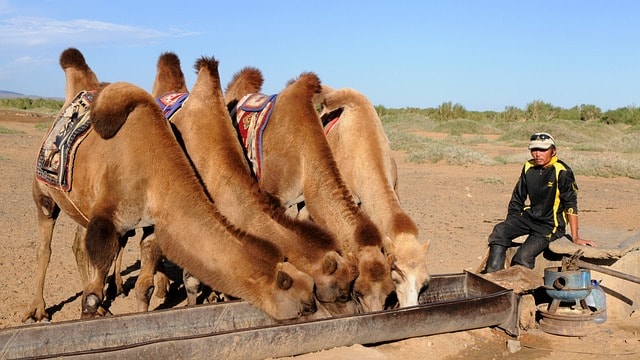
Nomadic Life: Living in the Gobi
A day in the life of a Gobi nomad is one of constant adjustment, with activities like milking goats and herding animals being the rhythm of their existence. The scarcity of resources like pastureland, water and wood requires frequent moving, made worse by modern issues like over grazing and loss of traditional knowledge.
Despite all these challenges, the nomads’ connection to the land is evident in their cultural narratives and use of the stars for navigation, a link that ties them to ancient trade routes and the wider world.
The Gobi nomads’ diet is also a reflection of their environment, with goat milk tea and bortzig being their main staples and minimal consumption of vegetables and fruits due to water scarcity.
This diet born of necessity is a testament to the nomads’ ingenuity in making the most of their surroundings, crafting a lifestyle that is both sustainable and deeply connected to the desert they call home.
Ancient Trade Routes: The Silk Road
The Gobi Desert’s importance goes beyond its natural wonders and into history, it was a key part of the ancient Silk Road network.
As caravans traversed the southern part of the Alxa Plateau, the Gobi became a corridor connecting the East and West, facilitating the exchange of goods, ideas and cultures. Some of the most famous trade routes of old passed through the Gobi, carrying silk, spices and other treasures that would shape civilizations.
Proof of this rich cultural heritage can be seen at sites like the Mogao Caves complex near Dunhuang, which dates back to between the 4th and 10th centuries. The Gobi’s role in the Silk Road reminds us of the desert’s place in the broader history of human and the connections it has maintained between distant lands and peoples.
The Gobi’s Fossils
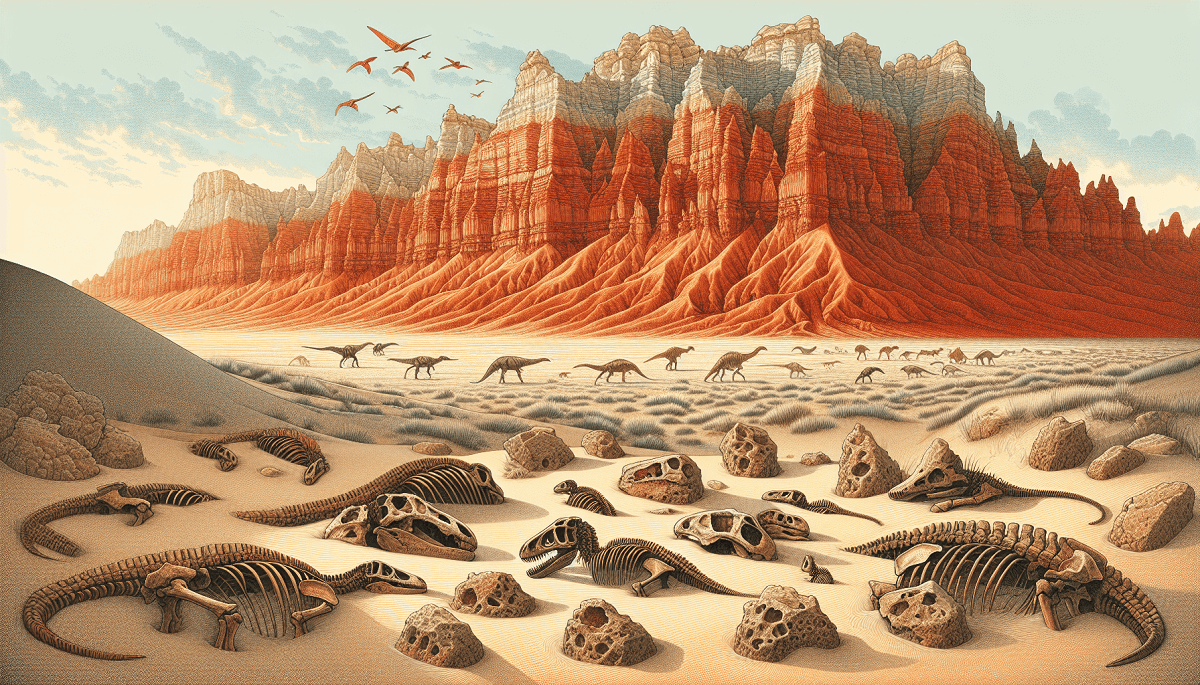
The Gobi Desert Mongolia is not just a living museum of biodiversity but also a paleontologist’s playground, having been a rich ground for discoveries that have rewritten our understanding of prehistoric life. For nearly a century, the sands and rocks of the Gobi have been thoroughly explored, revealing the remains of creatures that lived millions of years ago.
The discovery of the first dinosaur eggs in the Gobi was a breakthrough that changed the story of dinosaur reproduction and parental care.The Mongolian Gobi is a dinosaur fossil reservoir and contributes to our knowledge of the later Cretaceous period with over 80 dinosaur genera discovered, one-fifth of the total known dinosaur genera.
Each fossil found – from the ‘Two fighting dinosaurs’ to the ‘Oviraptorosaur laying its eggs’ – is a window into a past as strange as it is fascinating and cements the Gobi’s status as a global paleontological treasure.
Uncovering History: Flaming Cliffs and beyond
Among the Gobi Desert’s many paleontological sites, the Flaming Cliffs stand out for their red colour and historical significance. It was here that the first dinosaur eggs were found, providing unheard of insight into the nesting behaviour of these ancient creatures.
While the Flaming Cliffs have been explored, they still produce fossils, but the impact of paleontologists and tourists on the site is a concern for ongoing research and conservation efforts.
Beyond the Flaming Cliffs, the Gobi has over 60 fossil sites, each rich in vertebrate fossils and contributing to the vast paleontological record of the region.
Sites like Khermen Tsav and the Nemegt Cliffs are just a few of the many that have made the Gobi a hub for understanding the evolution and diversity of life on Earth.
Conservation Challenges of the Gobi
The Gobi is resilient but faces many conservation challenges that threaten its ecological integrity and biodiversity. Desertification, driven by climate change and exacerbated by overgrazing and water overuse, is growing, turning fertile land into deserts.
Mining activities, especially for copper and gold, is a pressing threat to the desert ecosystem with more and more land being designated for exploration and extraction disrupting wildlife habitats.
The ‘Great Green Wall’ project of China has shown mixed results with some areas retreating and others expanding. The challenge of balancing economic development with ecological conservation is ongoing in the Gobi as the desert’s natural resources are attracting national and international interest.

Desertification: The Expanding Gobi
Desertification is looming over the Gobi as the desert is expanding due to a combination of natural and human factors. Climate change is visible, with changes in weather patterns and increased aridity leading to land degradation.
Intensified livestock grazing, especially by goats, has further stressed the Gobi’s ecosystems resulting in vegetation loss and erosion.As the Gobi expands the consequences are felt far beyond the desert’s edge, with agricultural land lost, threatening food security and the livelihoods of those who depend on the land.
Desertification is not just an ecological issue but also a socio-economic one with the Gobi’s fate linked to the well-being of its human and animal inhabitants.
Resource Extraction: Economy vs Ecology
The Gobi Desert’s richness lies not only in its biodiversity but also in its vast mineral reserves including the significant copper and gold deposits at Oyu Tolgoi. This copper–gold porphyry discovery has been a key to Mongolia’s economic development, a turning point in the country’s modern history.
As large-scale mining operations continue the impact on the Gobi landscape and its inhabitants is a growing concern.The economy versus environment is a story that plays out across the Gobi’s dry lands as natural resources must be extracted against the need to protect the desert’s fragile ecosystems.
Finding a balance that preserves the Gobi’s ecological treasures while harnessing its economic potential is a vital task for the future of this unique region.
Gobi Adventures

The Gobi Desert Mongolia has more to offer than its ecological and historical significance to adventure and activities that attract travellers from around the world. The Gobi’s vast open skies are perfect for stargazing, with festivals celebrating the phenomenon attracting local and international visitors.
For the thrill-seeker, the Khongor Sand Dunes are a challenge to be conquered, with their height and the mysterious ‘singing sands’.
You can experience the traditional way of life in the Gobi by staying in a nomadic ger and immerse yourself in Mongolian culture. The Thousand Camel Festival is another highlight, showcasing the importance of camels in the Gobi and offering a glimpse into the region’s cultural diversity through races, competitions and exhibitions.
Starry Nights and Khongor Sand Dunes: Gobi Experience
The Gobi Desert has plenty to offer nature lovers:
- No light pollution and clear skies making it an astronomer’s paradise
- The Milky Way’s arc across the sky
- Watching the sunrise or sunset in the Gobi’s stark beauty with the changing light casting the landscape in a kaleidoscope of colours
These Gobi, Ala Shan and Altai experiences will blow your mind and leave you in awe of the natural world.For those looking for adventure, the Khongor Sand Dunes offer physical exertion and breathtaking views.
Climbing these dunes up to 300 meters high is a journey of shifting sands beneath your feet and the rhythmic sounds they make, a natural symphony with each step. Whether on foot or on the back of a gentle Bactrian camel, exploring the dunes is an encounter with the Gobi’s dynamic spirit. a gentle Bactrian camel, exploring the dunes is an encounter with the Gobi’s dynamic spirit.
Wildlife: Observation Opportunities
The Gobi Desert’s wildlife is as varied as its landscape, offering opportunities for observation and encounter. Specialized tours for wildlife enthusiasts to spot rare species like snow leopard and Bactrian camel. The Gobi’s wilderness is a sanctuary for these animals to roam freely in their natural habitat.
The thrill of seeing a wild ass running across the plains, gazelles gliding quietly or snow leopards navigating the Gobi’s vastness is an experience to remember. These encounters are not only a highlight for visitors but also a reminder of the importance of conservation efforts to protect these wild animals and their home from human activities.
Conclusion
The Gobi Desert, with its different landscapes, climate extremes and rich tapestry of life, is a monument to the beauty and resilience of nature. From being the cradle of ancient civilizations and a home to diverse species to current challenges of conservation and sustainable development, the Gobi continues to inspire and fascinate.
As this guide ends, we hope the Gobi’s charm stays in these pages and calls you to explore its vastness and contribute to the preservation of this amazing ecosystem.
FAQs
What’s the difference between the Gobi Desert Mongolia and the Sahara?
The Gobi Desert Mongolia is different from the Sahara due to its high biodiversity, many paleontological discoveries, extreme temperature fluctuations and rocky terrain instead of sandy. These factors make it unique from other deserts.
Can I find dinosaur fossils in the Gobi Desert Mongolia?
Yes, dinosaur fossils can be found in the Gobi Desert Mongolia , with over 80 dinosaur genera discovered, one-fifth of the total known dinosaur genera.
How do nomads live in the Gobi Desert Mongolia?
Nomads in the Gobi Desert Mongolia live in portable gers, herd animals, use traditional knowledge to navigate and have a diet that reflects the scarce resources of the desert. This allows them to thrive in a harsh and unpredictable environment.

